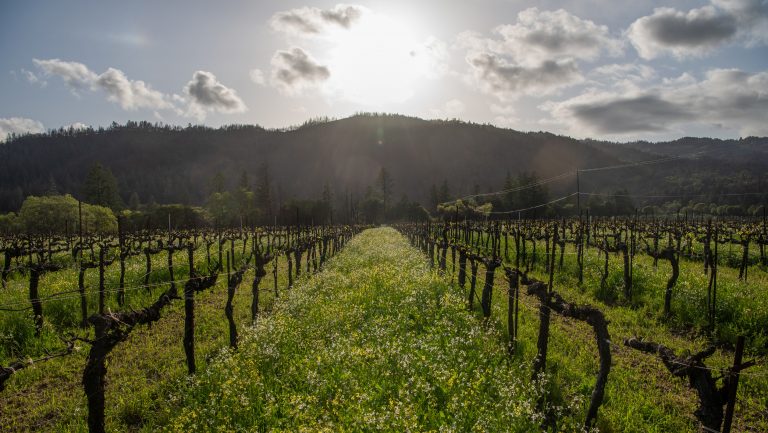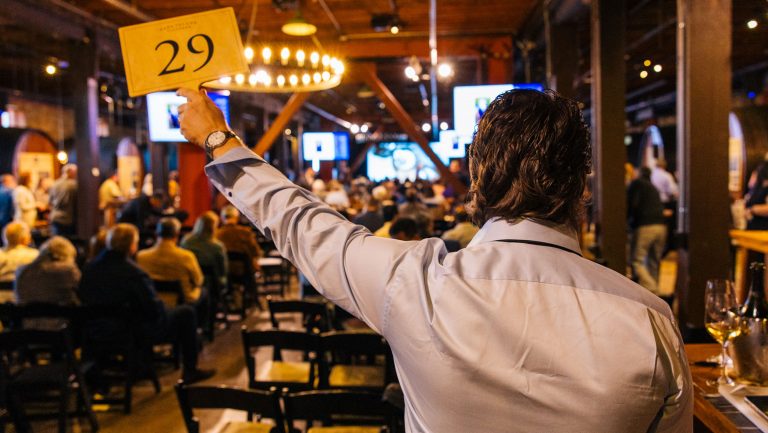Biodynamic wines are gaining visibility—and popularity—in the wine world. Though they still make up only a small part of global wine production, there are more than 80 Demeter-certified biodynamic winegrowers in the United States, according to Demeter USA, the country’s first certifying body for chemical-free agriculture. There are nearly 500 such winegrowers in Europe, as well as nearly 200 more that are certified by the European biodynamic wine organizations Respekt Biodyn, which has 27 members, and Biodyvin, with 150. In Australia and South America, the movement is also starting to grow. In addition, there are many winemakers who practice biodynamics but choose not to get certified.
“More than ever, people are becoming aware that conventional agriculture is using things they don’t want in their beverages or on their table—like glyphosate,” says Rudy Marchesi, Demeter USA’s new board chairman and a partner at Montinore Estate in Oregon’s Willamette Valley. “So we’re seeing a real uptick in interest [in biodynamic wines] and we’re also seeing a greater awareness of how biodynamics impact the quality and expressiveness of wines.”
Most wine industry professionals are familiar with the basic tenets of biodynamics, including precepts like the prohibition against the use of pesticides and artificial herbicides in the vineyard. Growers must also generate as much fertility as possible on site (therefore, the presence of animals and the use of composting are crucial), and they must make use of nine biodynamic “preparations” to help promote soil and plant health. These preparations are made of such ingredients as cow manure, herbs, and chopped-up oak bark and are sprayed onto the vines and the compost pile.

Don’t miss the latest drinks industry news and insights. Sign up for our award-winning newsletters and get insider intel, resources, and trends delivered to your inbox every week.
Demeter-certified wine cannot contain any additives, either, except for minuscule amounts of sulfur; bentonite clay and organic or biodynamic egg whites or milk are also permitted during processing. “The biodynamic wine certification is the closest thing to a natural-wine certification,” says Dan Rinke, winemaker at Johan Vineyards in Rickreall, Oregon. That all depends on one’s definition of “natural wine.” Some say natural wine cannot contain any sulfur, but Demeter allows for 100 milligrams per liter of sulfur. Conventional wines can have as much as 350 mg/l, depending on the country they’re from.
The history of biodynamics in the wine industry, however, is less well known. The origin of biodynamics begins with Rudolf Steiner, an Austrian philosopher and educator and the founder of a belief system and practice called anthroposophy (as well as the Waldorf method of education), who delivered his first lectures on biodynamics in 1924 at an estate in what is today Poland. He died of cancer soon after. His acolytes spread the gospel of biodynamics mostly to fruit and vegetable farmers—not to growers of wine grapes. Steiner himself was famously a teetotaler, and most anthroposophists avoided alcohol, claiming it muddied the mind and interfered with spiritual development.
By the summer of 1933, the Nazis had banned Steiner’s books from public libraries in Bavaria, and by 1935, they had gone so far as to ban the Anthroposophical Society, in part for having contact with “foreign freemasons, Jews, and pacifists.” As a result, most biodynamic farmers in Europe kept a low profile until after the war’s end in 1945.
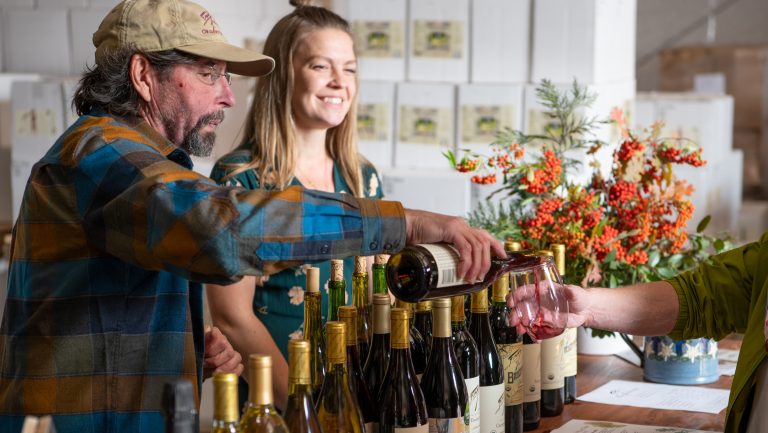
“Biodynamics was being forced underground by the Nazis during that period,” says Jonathan Frey, a cofounder with his wife, Katrina, of Frey Vineyards in Redwood Valley, California, the first Demeter-certified winery (certified in 1996) in the U.S. The postwar period saw the rise of chemical fertilizers, fungicides, and pesticides, which may be one reason biodynamics did not immediately spread. There’s no evidence that any winegrowers practiced biodynamics in their vineyards before the 1960s.
Biodynamic Winemaking Takes Off in France
This first wave of biodynamic winemakers put Alsace, France, on the map as a hotbed of the movement—which it remains today. Eugène Meyer, in 1969, was among the first grape growers to take up biodynamics there. After he was exposed to a chemical spray on his vineyard in Bergholtz, southwest of Colmar, Meyer suffered the paralysis of an optic nerve. His homeopathic doctor encouraged him to read up on biodynamics, and Meyer and his wife immediately began converting their vineyard, which in 1980 became the first vineyard to be Demeter certified. Today, Domaine Eugène Meyer, which is run by the Meyers’ grandson Xavier Meyer, is still Demeter certified. Just 10 miles north of Bergholtz, in the village of Pfaffenheim, a second influential Alsace winemaker, Jean-Pierre Frick of Domaine Pierre Frick, converted from organic to biodynamic in 1981.
Alsatian winemakers weren’t the only ones experimenting with Steiner’s biodynamic principles in the 1980s. In the Loire Valley, Nicolas Joly, the owner of La Coulée de Serrant, began experimenting with biodynamic cultivation in 1980. An investment banker before he returned to his family’s Savennières estate in 1977, Joly would later become the intellectual leader of the biodynamic wine movement in France. An official from the chamber of agriculture told Joly he’d save money if he used herbicides in his vineyard. He tried them, but within two years, the color of the soil had changed, insects and birds had disappeared, and the vineyard had become lifeless and drab. Joly read Steiner’s lectures and adopted his ideas. By 1984, his whole estate was biodynamic—and full of life. In 2001, Joly founded the Renaissance des Appellations (Return to Terroir), a group that now comprises 230 biodynamic winegrowers across 13 countries.
Then, further east in Vouvray at Domaine Huet, Gaston Huet, his son-in-law Noel Pinguet, and the vineyard manager Jean-Bernard Bertholmé were inspired in the late 1980s to begin employing biodynamics in the Huet vineyard after they heard a grape grower named François Bouchet preaching about its benefits at a conference.
“Never in the history of the estate have we used chemical fertilizers or pesticides,” says Sarah Hwang, the president and CEO of Domaine Huet. Nonetheless, she explains, the Huet team was intrigued when they learned about the principles of biodynamics. “After the Second World War, there was a harmony that was lost,” says Hwang. “Biodynamics offered the possibility of reconnecting with nature. For us, the philosophy is really about balance.” The Huet team began practicing biodynamics in 1988, and by 1990, all of Huet’s parcels were being farmed biodynamically—the winery received Demeter certification in 1993.
In Burgundy, Claude Bourguignon, a French government soil microbiologist, and his wife, Lydia, were the most influential ambassadors of biodynamics. In the late 1980s they began analyzing soil at wineries in the region. “Bourguignon gave a talk to the famous leading Burgundy growers,” says Monty Waldin, the author of Biodynamic Wine and a biodynamic wine consultant based in London and Tuscany. “And he said, ‘If you carry on spraying, your soil will have less life than the sand of the Sahara Desert.’”
Though not a biodynamicist himself, Bourguignon’s assertion that healthy soil needs to be alive with fungi and microbes got the attention of some of the Burgundy winemakers, such as Lalou Bize-Leroy at Domaine Leroy in Meursault (who was also, at the time, a codirector of Domaine de la Romanée-Conti). Anne-Claude Leflaive, the winemaker at Domaine Leflaive in Puligny-Montrachet, hired Bourguignon to assess the effects of different practices on soil health. She divided one of her vineyards into three plots: one conventional, one organic, and one biodynamic. The results were telling. Only the plot treated with biodynamic preparations stimulated microbial activity at the deepest soil levels.
Bouchet began a biodynamic consulting business in 1989, Terres en Devenir, and helped convert Leroy and Leflaive to biodynamics. After Bouchet died in 2005, his son Matthieu and daughter-in-law Sylvanie carried on his legacy, running the family’s Loire-based business, which continues to provide consulting services and distribute biodynamic preparations.
Emergence in the U.S.
In the 1960s and ’70s, two biodynamic consultants spread the philosophy to winemakers in the United States: Alan Chadwick and his student Alan York. Chadwick, whose mother was a Steiner devotee, was from the U.K. His travels led him to San Francisco in early 1967. In March, he began running the garden at the University of California at Santa Cruz, and he later managed the Round Valley Garden Project in Covelo, California. York worked and studied biodynamics under Chadwick at Round Valley, as did Jonathan and Katrina Frey. The Freys met in Covelo in 1976 and founded Frey Vineyards four years later—all 350 acres of which are biodynamic. The winery releases 220,000 cases each year: 10 percent is Demeter certified, and the rest is made from organic fruit that the Freys source for their organic line.
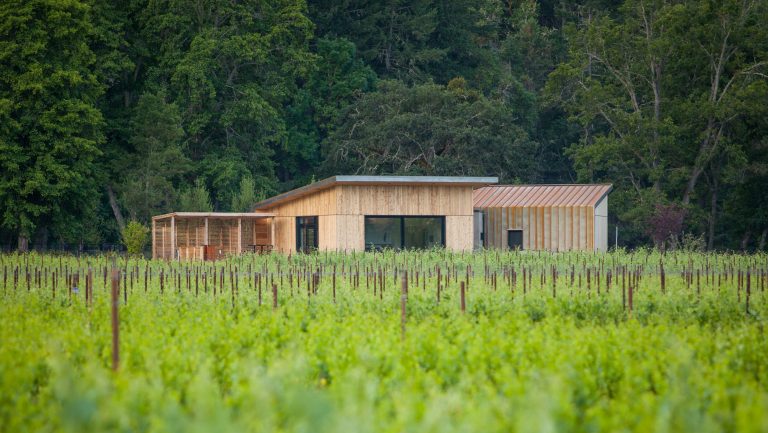
York went on to become one of the world’s leading biodynamic wine consultants, helping to convert to biodynamic practices wineries such as Benziger Family Winery in Glen Ellen, California; Bonterra in Ukiah, California; Cowhorn in Jacksonville, Oregon; Cooper Mountain in Beaverton, Oregon; and Il Palagio, the Tuscan winery owned by Sting and Trudie Styler. “Alan had clients all over the world,” says Bill Steele, the cofounder of Cowhorn. York, who died in 2014, was a consultant at Cowhorn from the start—since 2003. “His fingerprints are all over the property,” Steele says. “Sometimes I talk like he’s still here.”
The first vineyard project York consulted on was a collaboration in 1993 with Jimmy Fetzer, then the owner of the winery Ceago in Mendocino County. (The Fetzer family, pioneers in organic farming, sold Fetzer Vineyards in 1992.) “When I hired Alan,” says Fetzer, “he didn’t know anything about grapes. He was doing apples over in Anderson Valley. So he was excited.” Together, Fetzer and York learned from each other and redesigned the property. Ceago was Demeter certified in 1996; five years later, Bonterra (a Fetzer Vineyards label) acquired the property, which today is known as McNab Ranch. Fetzer adds that York was an environmentalist but also a capitalist. “He wanted to move this thing [biodynamics] forward, and he knew how to do it,” says Fetzer. “If it was profitable, it made sense.”
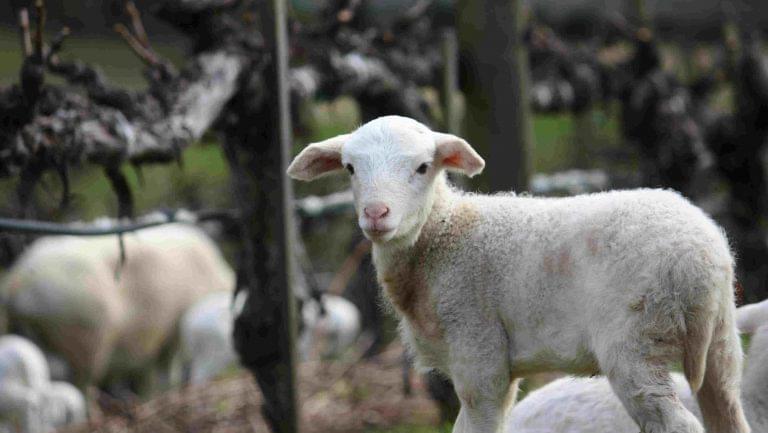
From 1994 to 2000, York helped convert the Benziger property, which the Benziger family had farmed conventionally for seven years “until we saw the error of our ways,” says Chris Benziger, the winery’s vice president of trade relations. “It was challenging for us [to stop using chemical fertilizers],” he says. “It’s similar to someone coming off an addiction—like sugar or caffeine.” The winery received Demeter certification in 2000.
“You could taste the difference right away,” says Benziger. “Our first biodynamic wine, Tribute, was a beautiful, terroir-driven wine.” Today, Benziger produces 160,000 cases annually, and 10 percent of it is Demeter certified. (The rest is made with fruit certified sustainable or organic through California Certified Organic Farmers.)
In Oregon, the first vineyard to gain Demeter certification was Cooper Mountain Vineyards in the northern Willamette Valley. Cooper’s owner, Bob Gross, is a psychiatrist who was studying homeopathy in the mid-’90s. “It became obvious to me,” he says, “that biodynamics really was homeopathy for plants.” He invited York to visit the vineyard, and the two worked together—and Cooper received Demeter certification in 1999.
Biodynamics in the U.S. Today
These days, some of California’s most talked-about wineries—from Bonny Doon in the Santa Cruz Mountains to Tablas Creek Vineyard in Paso Robles—are biodynamic. Similarly, in Oregon, there are dozens of biodynamic producers—both large and small—including Brick House, Brooks, Cowhorn, Johan, Keeler, Kelley Fox Wines, King Estate, Montinore, Maysara, Rex Hill, and Winderlea.
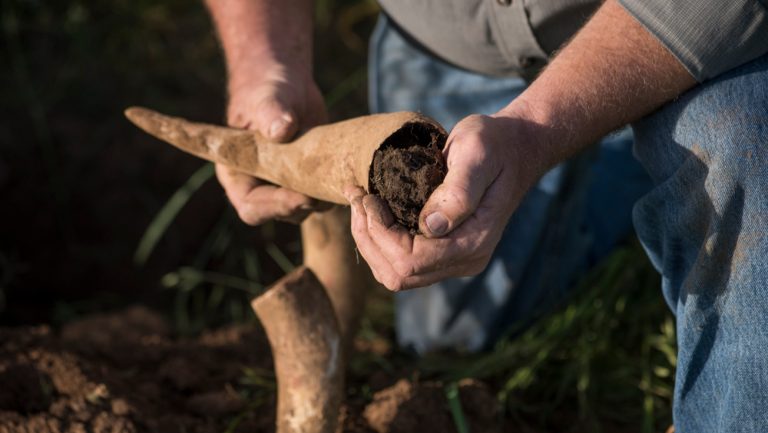
Ten years ago, Jeff Vierra launched Farm Wine, a a Berkeley-based import and distribution company with a large selection of biodynamic wines. At the time, he says, it was necessary to explain the concept of biodynamics to everyone. “No one knew what I was talking about,” Vierra says. “I’d be like, ‘Hey, this is a biodynamic Gamay from the Loire Valley.’ A lot of people just stared.” Now when he tells buyers he has a biodynamic Gamay from the Loire, the response is more like, “Oh, cool.”
In recent years, biodynamic wine has become more common on wine lists and at wine shops as well, thanks to importers and distributors like Vierra, who’ve made it their job to educate wine buyers behind the scenes. Foremost among them is the New York City–based import company Louis/Dressner, which was founded 30 years ago.
“Louis/Dressner made [biodynamics] the dominant topic of conversation,” says Blake Murdock, the managing director of Rare Wine Co., an import company based in Brisbane, California. Joe Dressner died in 2011, but his partners, Denyse Louis and Kevin McKenna, continue to champion small-scale producers who hand-harvest, don’t inoculate in the cellar, and use only native yeasts. Often, that translates to biodynamic wine. Maya Pederson, a sales rep at Louis/Dressner, estimates that 20 percent of the company’s portfolio is biodynamic—though not necessarily Demeter certified. “We are not dogmatic,” says Pederson. “I think flexibility in wine is very important.”
Rare Wine Co. is another prominent player, though Murdock says the company never set out to be evangelists for biodynamic wines. Every grower in its book, however, is either organic or biodynamic. The company is the U.S. agent for Domaine Huet, Descendientes de J. Palacios in Spain’s Bierzo region, and Dominio de Pingus in Spain’s Ribera del Duero region.
Natural-wine importers have proliferated over the past decade. Among them are Zev Rovine Selections, José Pastor Selections, Sylvester Rovine Selections, Cream Wine Company, Jenny & François Selections, Walden Selections, Selection Massale, Indie Wineries, and drinkOKwines. All carry extensive selections of biodynamic producers. Other importers that were early advocates of biodynamically produced wines include Polaner Selections, Rosenthal Wine Merchant, and Kermit Lynch.
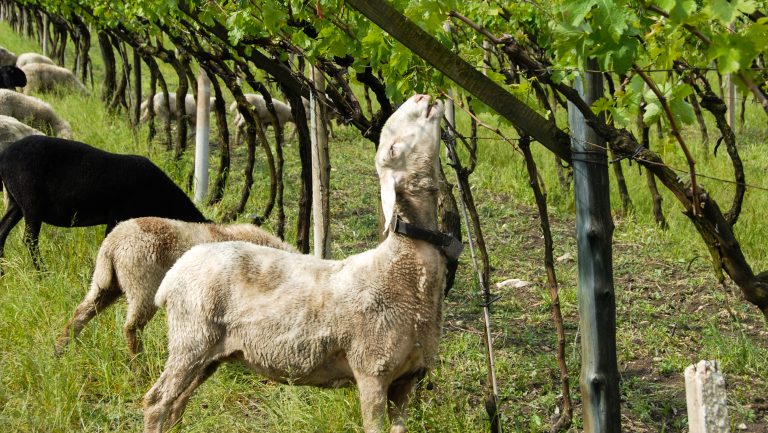
Biodynamics Goes Big
How wine companies are scaling up an agricultural method thought to be hands-on and highly personal
The Influence of Somms and Retailers
Today, most cities in the U.S. are home to sommeliers or wine directors who champion biodynamic wines. But in the early aughts such aficionados made up a small group. Some of the pioneers, according to natural-wine expert Alice Feiring, were Arnaud Erhart, Byron Bates, and Pascaline Lepeltier, MS, in New York City; Mark Ellenbogen in San Francisco; and Lou Amdur in Los Angeles.
Arnaud Erhart was a co-owner and the wine director of the French restaurant 360 in Red Hook, Brooklyn, from 2002 to 2007. “360 was a real think tank,” says Feiring, the coauthor, with Lepeltier, of The Dirty Guide to Wine, among other books. Erhart, who had worked with Jorge Riera at Balthazar in Soho, lured him away to work at 360. Riera would go on to become a natural-wine guru, shaping the lists at New York City’s Contra, Wildair, and The Ten Bells. He’s now the wine director at the Tribeca bistro Frenchette.
Around the same time in the 2000s, Byron Bates began promoting organic and biodynamic wines at the Chelsea hotspot Bette, where he was the general manager and wine director until it closed in 2008. From 2010 to 2011 he was the wine director at Isa in Brooklyn, which also had a wine list that leaned toward biodynamic and natural selections. Now Bates and his business partner, William Fitch, import wine through their company, Goatboy Selections.
Ellenbogen started the wine list at San Francisco’s Slanted Door and then launched Bar Agricole. Before Amdur opened Lou Wine Shop in L.A.’s Los Feliz neighborhood, he’d introduced Lou Wine Bar in 2005, a restaurant in Hollywood that focused on wines made from biodynamic and organically farmed grapes.
Lepeltier is one of the best-known advocates of natural and biodynamic wines. She became the wine director at Rouge Tomate in New York City in 2009 and built it into a temple of minimally manipulated, organically farmed wines. By the time she left in 2017, the list was 85 percent biodynamic, natural, and organic and it had won two awards from the World of Fine Wine—Best Long Wine List in the World (2017) and Wine List of the Year 2017. (The restaurant closed in the fall of 2018.) Lepeltier continues to elevate biodynamic, organic, and natural producers at Racines NY, which she joined as managing partner last year.
In 2012, Dana Frank became the wine director at Ava Gene’s in Portland, Oregon, where she introduced diners to a collection of small-scale Italian producers, most of them organic or biodynamic. Four years later—after having won two sommelier of the year awards—Frank opened the natural-wine-focused restaurant Dame, and last summer she opened her own wine bar/wine shop, Bar Norman.
In New York, other supporters of natural, often biodynamic wines include Paul Grieco, the co-founder of the wine bar Terroir, which opened in 2008; Justin Chearno, the wine director and a partner at the Four Horsemen in Williamsburg; and Alessandro Trezza, the chef at Have & Meyer.
“Then there are the people who are absolutely committed to biodynamic [and] natural but who still continue to buy from the classics,” says Whitney Schubert, the French portfolio manager at Polaner Selections. “So they have these lists where you can find an icon and then 20 groovy winemakers you’ve never heard of.” She puts John Burns Patterson, the wine director at Frankies Spuntino Group in Brooklyn, in this category. Wine shops such as Chambers Street Wines in Tribeca, which opened in 2001, have promoted biodynamic wines as well, as have Uva Wine & Spirits in Williamsburg, Wine Therapy in Nolita, Discovery Wines in the East Village, and Thirst Wine Merchants in Fort Greene.
In the Bay Area, early proponents of biodynamic wine include Jonathan Waters, the wine director at Chez Panisse in Berkeley; Jeff Berlin, the wine director at À Côté in Oakland; and David Lynch, the former owner and wine director at St. Vincent Tavern (now closed). A number of wine bars and shops have been instrumental in making the Bay Area an easy place to find biodynamic wines. These include Terroir Natural Wine Bar & Merchant, which opened in 2007 (no affiliation with Terroir in New York City); The Punchdown in Oakland, opened in 2011; Ordinaire in Oakland, opened in 2013; Ruby Wines in San Francisco, opened in 2002, and Vintage Berkeley in Berkeley, opened in 2005, and now has three locations. The Vintage retail store in Elmwood has an especially rigorous focus on biodynamic, organic, and natural bottles.
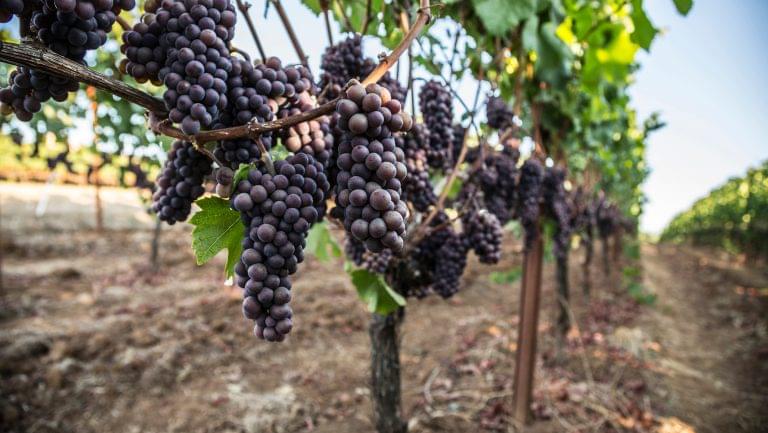
Other cities have percolating biodynamic and natural wine scenes, too—particularly Portland and Seattle. In addition to Dame and Bar Norman, Portland has natural-focused wine shops like Ardor, Division Wines, and Pairings Portland and restaurants and bars like Enoteca Nostrana, Les Caves, OK Omens, and Holdfast.
In Seattle, Kathryn Olson, the wine director at the new Central District restaurant L’Oursin, features only biodynamic and organic producers on her rotating list. Mark Papineau, the former co-owner of Bar Ferdinand, recently launched Cantina Sauvage, a series of pop-up tastings around town. Seattle also boasts the natural-wine bars Vif in Fremont, Left Bank in South Park, and Damn the Weather in Pioneer Square. Chicago, Los Angeles, and Washington, D.C., all have natural wine bars these days, too. These champions of natural and biodynamic bottles have helped make biodynamic wines more visible—even if not all producers are certified.
But despite all these champions—and new spots across the country where you can taste biodynamic wines from around the world—biodynamic production still accounts for a very small part of the overall wine industry. And biodynamics as a category still has less name recognition than does, say, organics.
The only way biodynamic wines will gain a bigger share of the wine market, say experts, will be if more drinkers start tasting the difference in the glass. That’s how Feiring became a convert—and now she writes books about natural and biodynamic wines. “What it comes down to is taste,” she says. “I became aware of biodynamics when I realized most of the wines I was liking were either biodynamic or organic—the wines I liked the most were biodynamic.”

Dispatch
Sign up for our award-winning newsletter
Don’t miss the latest drinks industry news and insights—delivered to your inbox every week.
Hannah Wallace writes about food, wine, sustainable agriculture, health, and travel for CivilEats.com, Inc., Food & Wine, Vogue, Portland Monthly, and the New York Times.

